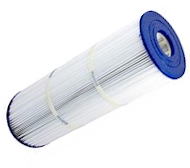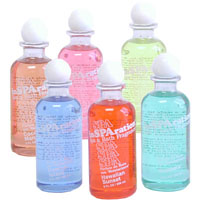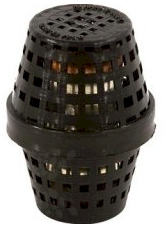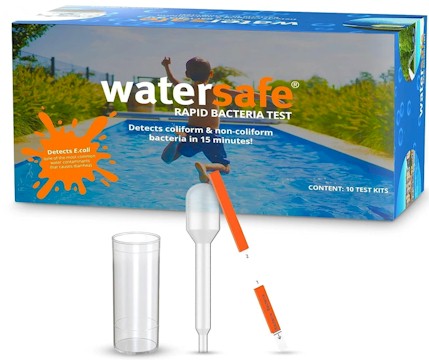|
|
269-978-1983
|
| |
|
|
|
|
|
|
|
|
|
|
|
|
|
|
Popular Products:
|
|
|
|
|
|
|
|
|
|
|
| |
|
Swimming Pool and Hot Tub Water:Shock
"Shocking" your water means adding chlorine-shock (sodium dichlor) or non-chlorine shock (monopersulfate) to your pool, hot tub, or spa. Doing this will rid your water of organic compounds that irritate bathers, cause odor, and cause cloudy water. Shocking will also break apart chloramines, which are molecules that form and can prevent your sanitizer from doing its job. Shocking turns these chloramines back into active chlorine, so that the sanitizer will work once again. Another benefit is that, when shocking in bromine systems, shocking gives sanitizing powers to bromide ions, which otherwise would have no sanitizing abilities!
Chlorine vs. Non-Chlorine Shock
Non-Chlorine Shock
Non-Chlorine shock is an oxygen-based shock that is generally used for regular maintenance of your water. Because it is oxygen-based, it has barely any odor. It's not as efficient as chlorine shock, but you only have to wait 15 minutes after shocking before entering your water again.
|
⇒ Spa-Daddy's Non-Chlorine Shocks:
|
Chlorine Shock
Chlorine shock is a form of chlorine known as sodium dichlor. It is recommended to use chlorine-based shock when new water is added to your pool or hot tub. Chlorine shock fixes water problems (cloudy water, algae, smells) faster than non-chlorine shock does.
Due to the strong chemical nature of this shock, you must wait 8 hours after use before bathers can enter the water again. The chlorine-based shock also has the potential to be destroyed by the sun. Because of these reasons, it is best to use chlorine-based shock in the evening. Also, solar covers should NOT be used during the 8 hours after using chlorine-based shock, as the highly chemically-saturated water will cause the bubbles on the cover to deteriorate.
*Chlorine shock should ONLY be used in pools, and should always be pre-dissolved in a bucket of water before adding it to your water, so that pool or spa surfaces are not damaged.*
|
⇒ Spa-Daddy's Chlorine Shock (For pool use ONLY):
|
When to Shock
- Chlorine-shock should be used when you refill your pool.
- Non-chlorine shock can be used for routine maintenance, and is also recommended after periods of heavy use, or if you haven't used your pool or hot tub for a while.
- **If your non-chlorine shock isn't doing the trick (particularly for more severe problems), adding some chlorine-based shock should take care of your problems, but ONLY use chlorine shock in pools.
How to Shock for Different Problems
Before you begin, remember - *NEVER begin any filter disassembly without first shutting off the circuit breaker, and bleeding any pool pressure systems (if you have one) with the pressure relief valve. You should also always check that everything is well secured after reassembling your filter before turning the circuit breaker on again.*
Shocking for cloudy water
Dust, sand and other contaminants can cause your water to be cloudy. In order to get rid of these contaminants, you should follow the steps below:
- Shock-treat your water using one of the shocks from above on this page.
- Replace or clean your filter.
- Use Pool Solutions Floc n' Vac to clump any remaining contaminants together.
- Vacuum any matter that settles on the bottom of your pool or spa.
Shocking for foamy water
Organic contaminants, or buildups of oil, lotion, perspiration, and soaps can cause your water to become foamy. Here is how to solve this problem:
- Use Sea-Klear Spa Self-Floccing Defoamer to get rid of the foam.
- Shock-treat your water using one of the shocks from above on this page.
- Replace or clean your filter.
- Vacuum any matter that settles on the bottom of your pool or spa.
*If you notice a waterline around your hot tub, you will most likely need to empty and clean your hot tub in order to get rid of the line*
Shocking for slimy/oily water
An oily water line, caused by oil, lotion, perspiration, and soaps can give your water a "slimy" feeling, and an unsightly oil line around the edge of the water. You can get rid of the problem by following the steps below:
- Remove the scum line around your hot tub or pool with a paper towel.
- Replace or clean your filter.
- Shock-treat your water using one of the shocks from above on this page.
- You can use a Scumball to prevent foam and water lines from appearing in the first place.
|
|










